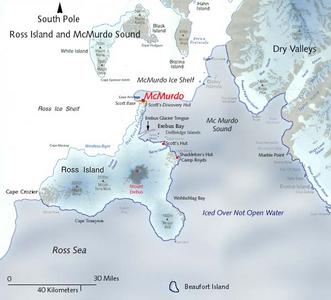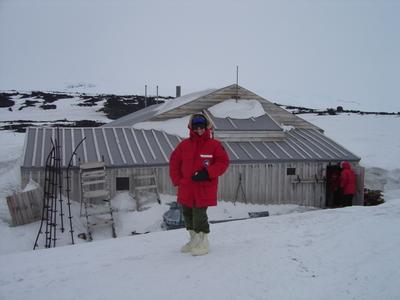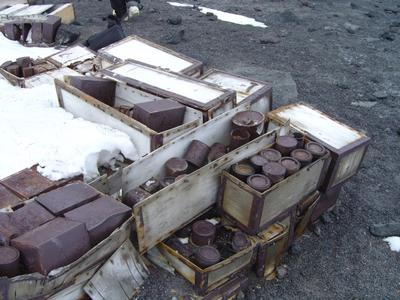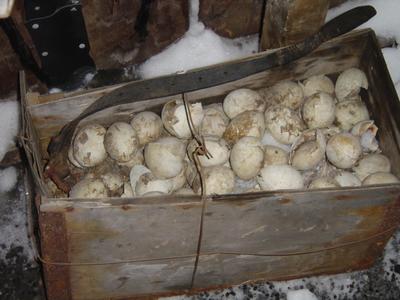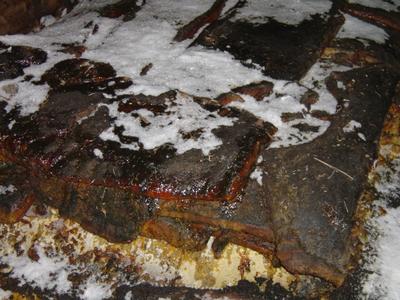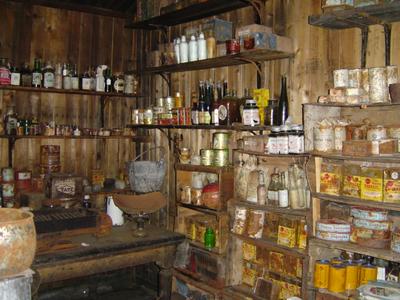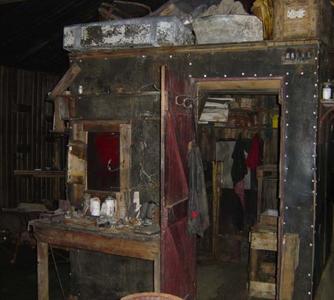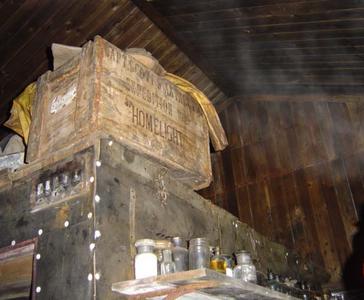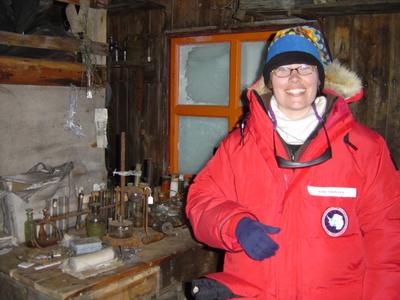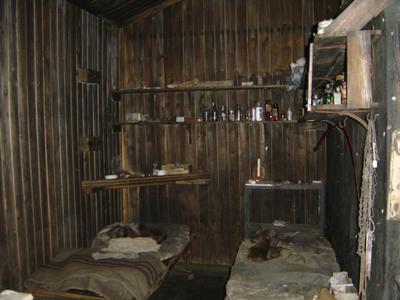
|
26 November, 2003Trip to Cape Evans Immediately upon returning from the Dry Valleys, I discovered the recreation department had scheduled an evening trip out to Cape Evans. Thankfully the trip still had a few empty slots and I was still clad in my Extreme Cold Weather Gear. So I quickly joined the group that was about to board the Deltas. Cape Evans is home to Scott’s Hut from his Terra Nova Expedition. Erected in January of 1911, the hut served as the winter quarters during his ill-fated mission to the South Pole. Despite being beaten to the Pole, Scott’s expedition accomplished a lot in the name of science. Scott’s five-man team collected numerous geological samples during their trek to and from the pole. In addition, remaining team members not part of the South Pole trek contributed towards our knowledge of Antarctic science. Three men made a mid winter trek to Cape Crozier to collect emperor penguin embryos (This trip is chronicled in Apsley Cherry-Garrard’s book "The Worst Journey in the World"); a six -man group lead by geologist, Griffith Taylor, explored the Dry Valleys; and a northern party lead by Victor Campbell discovered Oates Land (named for Lawrence Oates). Later the hut was occupied by Shackleton’s Ross Sea Party in May of 1915. This group, who set sail on the Aurora, had hoped to winter at Ross Island but a blizzard stranded them on Cape Evans. This group was to meet up with Shackleton’s Endurance crew at the top of the Beardmore Glacier. While the group of the Aurora spent a miserable 20 months at Cape Evans, the fate of Shackleton’s Endurance party is almost as well known as Scott’s Terra Nova expedition. Needless to say, entering the hut was truly amazing. Cups hang in the galley, the pantry is stocked with food, and the stables still contain equipment for the ponies. Old books and magazines lay on the tables, used lab equipment cover the work areas, Ponting’s dark room is stocked with chemicals, and bunks are draped with seal-skin blankets and warn out socks and trousers. One of the bunks had the following lightly inscribed: “RW Richards August 14th, 1916 Loses to date- Hayward, Mack, Smith”. Dick Richards, a member of Shackleton’s Ross Sea Party, wrote it. During their stay Reverend Arnold Spencer-Smith died of scurvy on March 9, 1916 and Aeneas Mackintosh and Victor Hayward vanished in a blizzard while walking on thin sea ice on May 8, 1916. Reading the inscription was a great reminder of how rough life was in the early days of Antarctic exploration. As we walked through the musty smelling and dimly light hut, the ghosts of Scott and his men, and the Shackleton party seemed to be with us- sharing their story.
Contact the TEA in the field at . If you cannot connect through your browser, copy the TEA's e-mail address in the "To:" line of your favorite e-mail package. |




